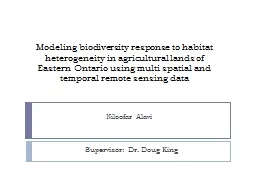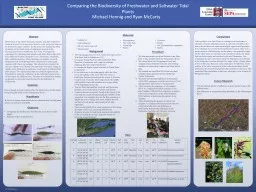PPT-Biodiversity In Minnesota
Author : conchita-marotz | Published Date : 2019-11-18
Biodiversity In Minnesota By Tyler Halvorson Red Tailed Hawk Buteo jamaicensis Description Length 19 to 26 inches Weight 2 to 4 pounds Color Usually brown with
Presentation Embed Code
Download Presentation
Download Presentation The PPT/PDF document "Biodiversity In Minnesota" is the property of its rightful owner. Permission is granted to download and print the materials on this website for personal, non-commercial use only, and to display it on your personal computer provided you do not modify the materials and that you retain all copyright notices contained in the materials. By downloading content from our website, you accept the terms of this agreement.
Biodiversity In Minnesota: Transcript
Download Rules Of Document
"Biodiversity In Minnesota"The content belongs to its owner. You may download and print it for personal use, without modification, and keep all copyright notices. By downloading, you agree to these terms.
Related Documents














